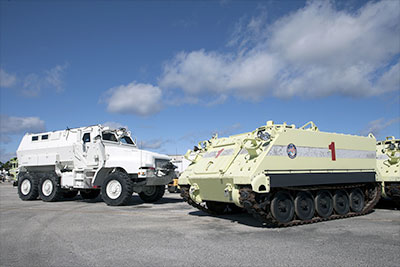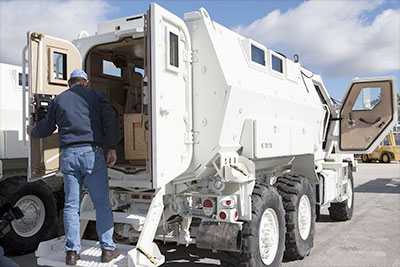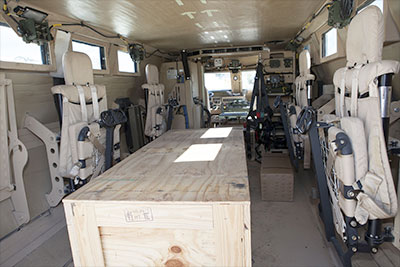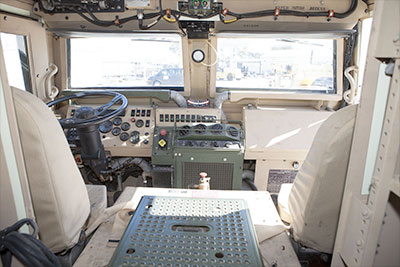With crewed launches on NASA's Space Launch System (SLS) and Orion spacecraft fast approaching, the Ground Systems Development and Operations (GSDO) Program at Kennedy Space Center led the effort to select an emergency egress vehicle that future astronauts could quickly use to leave the Launch Complex 39 area in case of an emergency. The first of four refurbished Mine-Resistant Ambush-Protected (MRAP) vehicles was shipped from the U.S. Army Red River Depot in Texarkana, Texas, and arrived at the center Dec. 5.
During crewed launches, the MRAP will be stationed by the slidewire termination area at the pad. In case of an emergency, the crew will ride a slidewire to the ground and immediately board the vehicle for safe egress from the pad. The existing bunkers around the pads would be used only if evacuation was not possible.
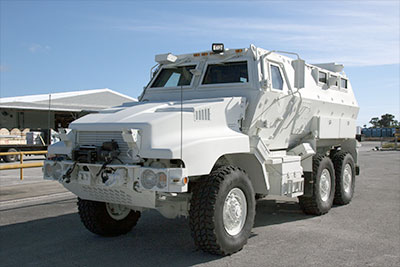
All four vehicles were transferred from the army at no cost to NASA. As each one arrives, they will be processed in and then transported to the Rotation, Processing and Surge Facility near the Vehicle Assembly Building for temporary storage. The vehicles will undergo some modifications to meet NASA's emergency egress requirements.
Danny Zeno, a GSDO operations integration engineer, led a two-year study of several emergency egress concepts with a team of people from NASA centers and programs. The team selected the slidewire system and the army's MRAP Caiman, a military vehicle that was used for operations in Iraq and Afghanistan.
The study team included representatives from Kennedy, Johnson Space Center's Flight Crew Office, NASA Headquarters, Marshall Space Flight Center, NASA Protective Services, Engineering, Safety and Mission Assurance, Ground Processing, SLS, Orion, and several contractor organizations.
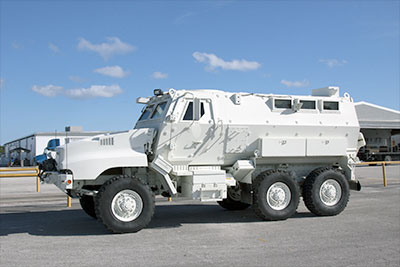
"This is definitely an upgrade from the space shuttle-era M-113 tank design," said Zeno. "Working across agencies helped us to select the most versatile vehicle possible for NASA's purpose."
The MRAPs have increased operability, field of vision and capacity, and can travel at speeds up to 65 mph. They are driven like other common vehicles with a normal front view, except the windows are four inches thick. Inside, the closed and sealed environment contains fold-down chairs for up to eight passengers.
The 40,000-pound, heavy-duty vehicles will provide protection against chemicals and projectiles that could be carried through the air during a catastrophic event at the pad.
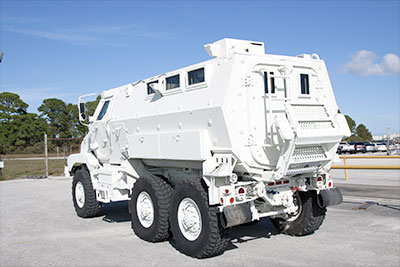
"We're in line with NASA's philosophy of saving money and acquiring a multiuse vehicle that also could be used by our Commercial Crew Program partners," said Tom Hoffmann, a GSDO operations integration engineer and member of the study team.
Currently, two URS Federal Services workers on the Institutional Services Contract have been trained to operate the MRAP. Zeno said there are plans to set up training scenarios for the SLS Program similar to those that were used to teach operators to handle the M-113.














